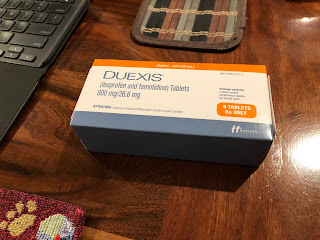Seven years ago, the Office of Civil Rights, under President Obama, issued a “Dear Colleague” letter, reasserting that sexual violence on campus was a violation of Title IX, and pushing universities to handle sexual-assault cases in a timely, transparent, accuser-friendly manner.Two out of three ain't bad? Then there's the friendly interview with serial liar Emma Sulkowicz that conveniently omits the fact that Sulkowicz filed her report months after the alleged incident, or Cathy Young's embarrassing revelations of Sulkowicz's friendly text messages in the wake of the purported "assault". The two principles of the study at the center of the piece, Jennifer Hirsch and Suzanne Goldberg, meet at a conference and resolve to conduct an "enthnography". It sounds really important! Except, of course, what they mean is, "unverified stories".
They call the ensuing project SHIFT, whose clumsy retronym stands for "Sexual Health Initiative to Foster Transformation". Already we know we are among advocates who know what they want to find and do. They're smarter! They've got Ideas!
... Hirsch and Mellins think about sexual assault socio-ecologically: as a matter of how people act within a particular environment. They are doggedly optimistic that there is, if not a single fix, a series of new solutions.But, rape is hard to prove! Can we expand it?
Today, the D.O.J. defines sexual assault as unwanted sexual contact, which means that groping counts, as does attempted assault. The crime hinges on intention, and there are often no witnesses, which makes it uniquely difficult to adjudicate in any legal system, let alone one made up of college administrators. Campus judiciary systems don’t have a criminal court’s investigative powers or evidentiary procedures, but they do have many of a criminal court’s responsibilities. To complicate matters further, everyone involved in the process—accuser, accused, administrator—essentially works under the same roof. Betsy DeVos, Trump’s Secretary of Education, has called the current approach a “failed system,” and said that she would seek to replace it."It might seem simpler to let the criminal-justice system handle things," Tolentino intones, "but universities have a responsibility to insure that women have equal access to education." Pesky due process! (But wait, aren't women already a majority of students enrolled in college?) And then there's all those juicy staff positions:
Columbia now has twenty-three staffers with Title IX responsibilities, including case managers, investigators, and administrators, and provides free legal services to accusers and accused. The school’s gender-based misconduct policy is thirty-one pages long.Somebody has to hire all those Womyn's Studies majors, not to mention attorneys who skipped class on the day they taught rape in crim law. It's a good thing, because in the end, Hirsh likens the situation to that with drunk driving; included in the "solutions" for that problem are
new laws, and social change, as school and community programs taught people to designate a driver and to intervene when a wobbly friend grabbed his car keys. It also involved changes to the physical environment: cities established police checkpoints, and offenders were required to install Breathalyzer locks on their cars. Citizens lobbied for better street lights, more speed bumps.What possible analog exists for these among sexual assault? Chastity belts? Whatever it might be, there's no doubt that some idiot will propose it, and it will rush through the legislatures in California, Illinois, and New York with hosannas. At last! Sexual assault has been cured! Meanwhile, young men will find themselves spied upon and spat upon for no reason other than owning a penis. Misbehavior or even missed communications on a date will result in unpardonable ejection. That is, the answer to the title question is "no".
